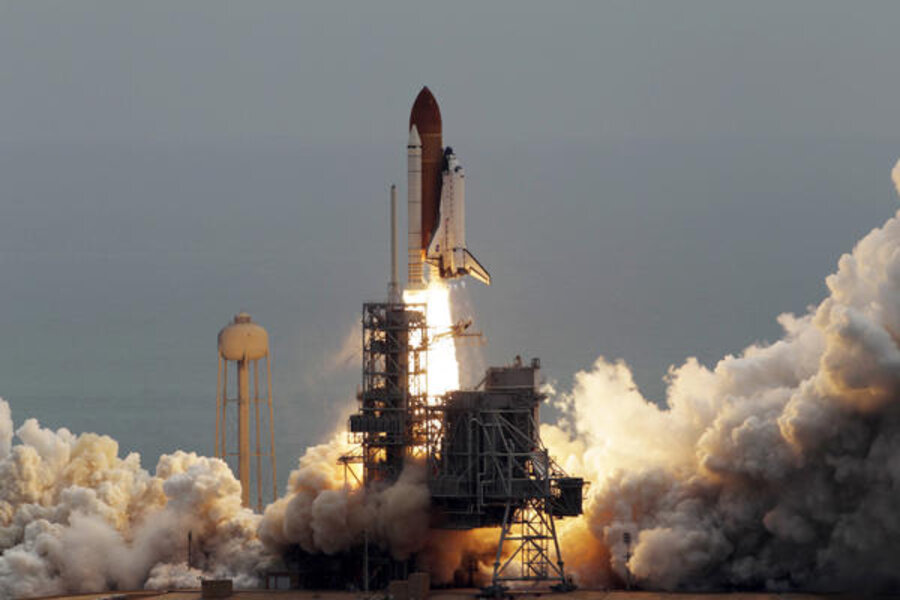Space shuttle Atlantis carries some curious cargo: two iPhones
Loading...
When Atlantis blasted off Friday, it carried two new voyagers into space: a pair of Apple iPhone 4s.
The iPhone already connects people worldwide via e-mail, Words With Friends, and Twitter. But the new SpaceLab app for iOS extends the iPhone's reach into a brand new world, or rather out of this world.
The app, developed by Odyssey Space Research, is en route to the International Space Station aboard the Atlantis. These first space-bound iPhones are destined for the ISS as part of Mission STS-135, the last flight of NASA’s 30-year-long Space Shuttle program.
“The revolutionary iPhone 4 offers an extraordinary opportunity to demonstrate serious functions previously reserved for more expensive, purpose-built devices,” says Odyssey CEO Brian Rishikof in a press release. “The potential for using iPhone 4 to both conduct and support in-space research and operations is enormous.”
A team of two from Odyssey, a spacecraft engineering, analysis, and research company based in Houston, designed the app specifically for the iPhone 4’s cutting-edge capabilities including the three-axis gyro, accelerometer, Retina display, cameras, and A4 processor.
This technology will be used to conduct four experiments:
- Limb tracker experiment will measure the distance and exact location of the iPhone in relation to the Earth’s center.
- Sensor cal, which calibrates the three-axis gyro and accelerometer to make subsequent measurements more accurate.
- State acquisition, which calculates the longitude and latitude of the spacecraft multiple times to predict the spacecraft’s path of orbit.
- Lifecycle Flight Instrumentation will monitor and categorize how radiation affects the iPhone.
The goal of the SpaceLab app is to gather as much data as possible now to aid in developing more advanced mobile applications in the future.
“We view this very much as the beginning,” Rishikof says in a phone call with the Monitor. “We intend to explore more capable and more operational applications in the future.”
Rishikof says he and developer Matt Benson worked aggressively to create the app and ensure the phone’s durability since Apple released the iPhone 4s last June.
“Matt was committed like I’ve never seen anyone committed before,” Rishikof says on the phone. Normally, a project such as this would have a two-year timeline between “getting it defined and getting it flown.”
Why the iPhone and not the iPad? “There’s no reason in principle why we couldn’t have done the iPad,” Rishikof says. Yet, the compact size of the iPhone gives the device less mass and volume, and therefore a smaller footprint when calculating measurements. “In the future, the iPad is definitely on our list,” he says.
Curious about the new app? Earth-based users can download a home version for 99 cents from Apple’s App Store. IPhone owners can conduct the same experiments as the orbiting astronauts, with certain features simulated to account for Earth’s gravity.
Once the iPhones arrive at the space station, they will live in the NanoLab, a small research platform housed on the ISS, for several months.
“We did fly two phones,” Rishikof says. “You never know what’s going to happen, in case one malfunctions.” Another benefit of sending two phones, he says, is the chance to execute twice the number of experiments, which creates double the data.
The iPhones are expected back on Earth in the fall, after hopping aboard a Russian Soyuz rocket. The collected data will then be analyzed and shared via the SpaceLab iOS app.
“I’m really into space education,” Rishikof says. “We need to engage people in the activities that are going on in the space program.”





